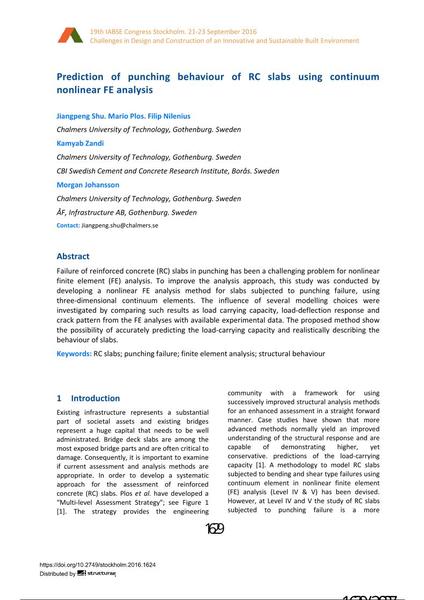Prediction of punching behaviour of RC slabs using continuum nonlinear FE analysis

|
|
|||||||||||
Détails bibliographiques
| Auteur(s): |
Jiangpeng Shu
(Chalmers University of Technology, Gothenburg. Sweden)
Mario Plos (Chalmers University of Technology, Gothenburg. Sweden) Filip Nilenius (Chalmers University of Technology, Gothenburg. Sweden) Kamyab Zandi (Chalmers University of Technology, Gothenburg. Sweden; CBI Swedish Cement and Concrete Research Institute, Borås. Sweden) Morgan Johansson (Chalmers University of Technology, Gothenburg. Sweden ÅF, Infrastructure AB, Gothenburg. Sweden) |
||||
|---|---|---|---|---|---|
| Médium: | papier de conférence | ||||
| Langue(s): | anglais | ||||
| Conférence: | IABSE Congress: Challenges in Design and Construction of an Innovative and Sustainable Built Environment, Stockholm, Sweden, 21-23 September 2016 | ||||
| Publié dans: | IABSE Congress Stockholm, 2016 | ||||
|
|||||
| Page(s): | 1629-1636 | ||||
| Nombre total de pages (du PDF): | 8 | ||||
| Année: | 2016 | ||||
| DOI: | 10.2749/stockholm.2016.1624 | ||||
| Abstrait: |
Failure of reinforced concrete (RC) slabs in punching has been a challenging problem for nonlinear finite element (FE) analysis. To improve the analysis approach, this study was conducted by developing a nonlinear FE analysis method for slabs subjected to punching failure, using three-dimensional continuum elements. The influence of several modelling choices were investigated by comparing such results as load carrying capacity, load-deflection response and crack pattern from the FE analyses with available experimental data. The proposed method show the possibility of accurately predicting the load-carrying capacity and realistically describing the behaviour of slabs. |
||||
